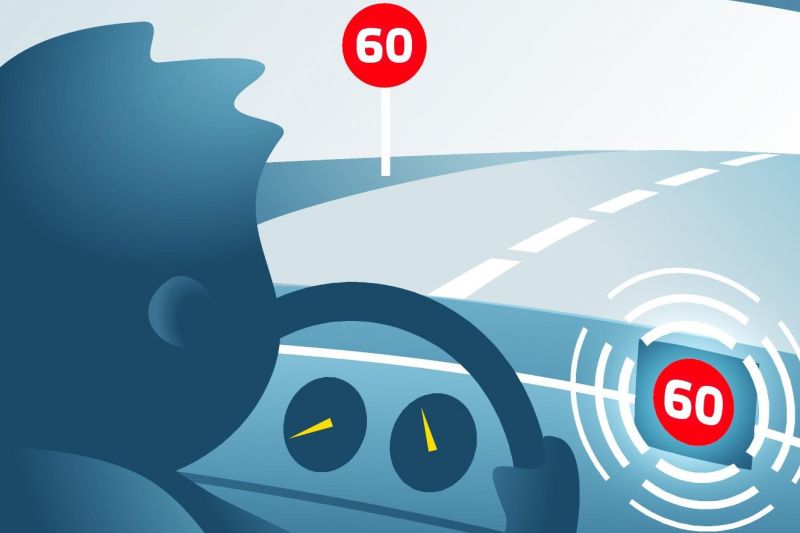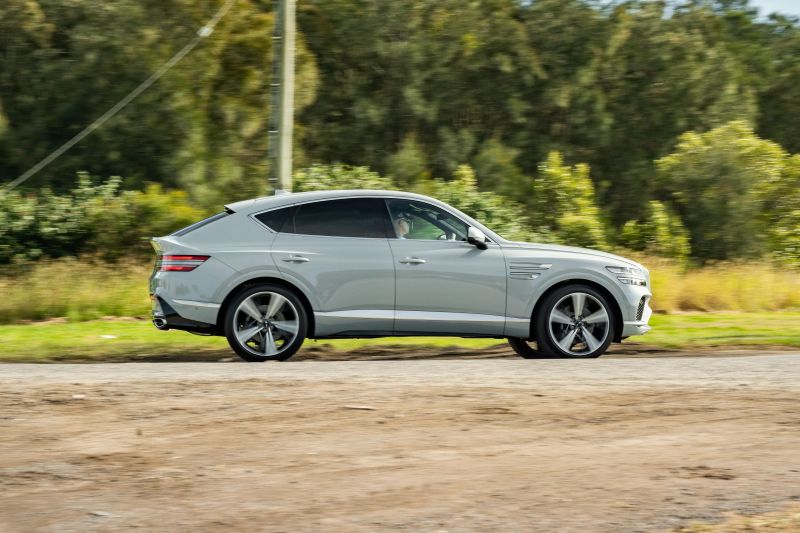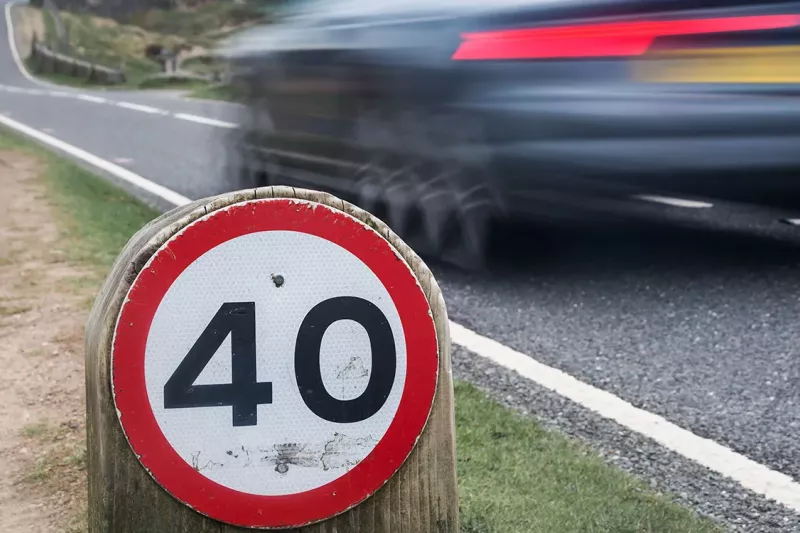From July this year, the European Union has introduced one of the most controversial laws in automotive history, which it has conveniently named “Intelligent Speed Assistance (ISA)”.
The system is designed to ‘help’ drivers comply with local speed limits by constantly monitoring the vehicle’s speed against what the vehicle determines to be the road’s posted speed limit, either using its camera system to read road signs or using GPS data.
If the vehicle goes over the speed limit (even by 1km/h) for just a few seconds, the vehicle then has to warn the driver to reduce speed via:
- Audible signal, such as constant beeping or a voice
- Flashing lights and/or alert on the dashboard
- Automatic reduction in engine power
- A hardening or vibration of the accelerator pedal
This law came into effect just last month in Europe, meaning all new cars being sold after that date have to have this system enabled by default. It’s also mandated that the feature cannot be permanently turned off.
Although the ISA system is not yet mandated in Australia, some manufacturers have been complying with the new regulation for some time – and a few of them are already sending vehicles to Australia with the system enabled.
We have now spent over a month with a vehicle that has this system enabled, which has given us a real taste of how poorly this government mandate has been thought out, and how badly it affects driver workload and distraction.
To put it simply, the system is dangerous.
Among a range of other brands, owners of new Kia, Hyundai, or Genesis vehicles have been subject to this draconian European mandate for some time, with Hyundai Australia working to roll back some of the harsher beeps in its new models.
Having recently taken possession of a Genesis GV80 Coupe with this system enabled, we can assure you it is quite possibly the most irritating system we’ve ever had to put up with in a car.
This is not a fault of Hyundai, Genesis, or any brand in particular that has been forced to implement it – rather, it’s an overreach by the European Union as to what it has the authority to mandate.
On the surface, the idea of going the speed limit at all times (60 in a 60km/h zone) is very sensible and logical.
However, only a fool or a liar will tell you that they never ever go 1km/h over the posted speed limit and even those who thought themselves to be ‘law abiding citizens’ have found their driving experience with the ISA system to be severely degraded.
As one owner told us about his recently purchased Kia “I love the car, but each time the speed alert comes on I feel like driving it off a cliff!”.
For those desperate to rush down and comment “don’t speed and you won’t have any issues”, here are some things to consider.
There is no margin for error; 1km/h over and the beeping starts
The first one is perhaps the most ill thought-out part of the government mandate.
Not only is there no buffer before the warnings and beeps start, it’s important to note your speedometer is actually usually wrong and it over reports your speed.
This means that when it says you’re doing 60 you’re likely doing 58-59km/h.
We have tested this extensively across numerous brands using both a calibrated laser speed gun (as used by the police) and other means and it always stacks up; most vehicle manufacturers overestimate the speed.
This is a good thing because it keeps you in check but when your car starts beeping at you for going 60km/h (true speed) in a 60 zone, it’s incredibly annoying and frankly, just wrong.
Just like speed cameras in my home state of Queensland have a 10 per cent margin before a speeding ticket is issued, the ISA system needs to have a buffer zone of at least five to 10 per cent.
You can’t turn it off permanently
Much like the auto start-stop that you have to turn off every time you get in a modern car, the ISA system is similar… but actually even worse.
Not only does it turn itself back on every single time the vehicle restarts, turning it off is not as simple as just pressing a physical button (like auto start/stop) – instead you have to dig through the vehicle menu and turn it off.
In our Genesis it is four presses: Menu, Vehicle Settings, Speed Limits, Off. All very tiny items on a big screen.
Hyundai has recently introduced a feature where you can map a shortcut button on the steering wheel to toggle the system off, which is a great solution being rolled out, but it means you lose your shortcut button (for something far more useful) to disable a feature you have been forced to pay for.
Given the vehicle doesn’t beep when you first turn it on, you usually end up doing this while driving and hear the first warnings, which is incredibly distracting. Even if you try and be good and not play with the screen while driving, you end up having to pull over or slow down to do so.
In our Genesis, the eye tracking technology is also constantly monitoring if the driver is paying attention to the road (instead of, you know, turning off the ISA system), so when we go about turning off the speed alert system, the attention alert system then starts beeping to tell us to pay attention! The irony.
It’s one step away from forcing your car to slow down
At this point in time, the implementation does allow OEMs to cut engine power when the driver tries to go over the speed limit as an option. We are yet to experience that, and it appears no OEM has brought that system to Australia yet.
While the European mandate so far says the driver can overrule the car’s computers and continue to accelerate, there is already talk in the EU of then using the car to dob the driver in for speeding to the relevant authorities – which would be pretty easy to do in any modern connected car that can send the vehicle’s GPS data, speed, and duration of time the vehicle was over the speed limit.
But wait, it gets worse!
As time goes on the idea has always been to actually stop the vehicle speeding at all. With the move toward smarter and more connected cars, the ability for the government to force manufacturers to implement a system that doesn’t allow new vehicles to go over the speed limit (at all) is just around the corner.
If we as a society accept this first step toward that measure, it will come without fail.
Australian implementation
For now the local authorities are monitoring the system’s roll out and effectiveness in Europe, but we have no doubt that Australia will mirror the European Union mandate in time.
Our local authorities will justify doing so by citing studies and data showing the ISA system reduces speeding and that by reducing speeding, there are less fatalities on the road.
This same data can then be used to simply say, ISA is now so effective that we will implement the next stage whereby you cannot speed – ever – even by 1km/h and if you do, we will issue you a ticket, force your car to slow down, or simply stop the car.
We are not advocating for speeding on a public road, but we are advocating for common sense.
The 40km/h limit in a road work zone with no road worker in sight, the open country road that is marked 60km/h with kilometres of clear visibility, the school zone limit on a public holiday… or frankly and most importantly, the basic concept of freedom to choose.
Freedom of choice is a fundamental part of human nature. So much so it has net effect on our mental health. There are dozens and dozens of peer reviewed studies that correlate the capacity to choose with happiness.
Again, we are not advocating for speeding on public roads and putting others on the road in danger. We are, however, advocating for your right to choose to comply with the law rather than being forced to. There is a fundamental difference.
At some point, we need to say no to the increasing and overarching government mandates impacting all aspects of our lives including cars, and that time is getting closer by the day.
MORE: New cars forced to automatically slow down drivers in Europe
MORE: Google Maps vs Waze: Which best avoids a speeding fine?









